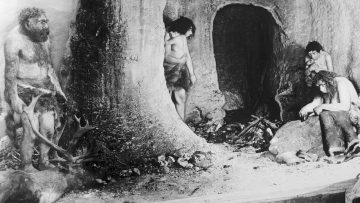Melissa Hogenboom in BBC:
 Forty thousand years ago in Europe, we were not the only human species alive – there were at least three others. Many of us are familiar with one of these, the Neanderthals. Distinguished by their stocky frames and heavy brows, they were remarkably like us and lived in many pockets of Europe for more than 300,000 years. For the most part, Neanderthals were a resilient group. They existed for about 200,000 years longer than we modern humans (Homo sapiens) have been alive. Evidence of their existence vanishes around 28,000 years ago – giving us an estimate for when they may, finally, have died off. Fossil evidence shows that, towards the end, the final few were clinging onto survival in places like Gibraltar. Findings from this British overseas territory, located at the southern tip of the Iberian peninsula, are helping us to understand more about what these last living Neanderthals were really like. And new insights reveal that they were much more like us than we once believed.
Forty thousand years ago in Europe, we were not the only human species alive – there were at least three others. Many of us are familiar with one of these, the Neanderthals. Distinguished by their stocky frames and heavy brows, they were remarkably like us and lived in many pockets of Europe for more than 300,000 years. For the most part, Neanderthals were a resilient group. They existed for about 200,000 years longer than we modern humans (Homo sapiens) have been alive. Evidence of their existence vanishes around 28,000 years ago – giving us an estimate for when they may, finally, have died off. Fossil evidence shows that, towards the end, the final few were clinging onto survival in places like Gibraltar. Findings from this British overseas territory, located at the southern tip of the Iberian peninsula, are helping us to understand more about what these last living Neanderthals were really like. And new insights reveal that they were much more like us than we once believed.
In recognition of this, Gibraltar received Unesco world heritage status in 2016. Of particular interest are four large caves. Three of these caves have barely been explored. But one of them, Gorham’s cave, is a site of yearly excavations. “They weren’t just surviving,” the Gibraltar museum’s director of archaeology Clive Finlayson tells me of its inhabitants.”It was in some way Neanderthal city,” he says. “This was the place with the highest concentration of Neanderthals anywhere in Europe.” It’s not known if this might amount to only dozens of people, or a few families, since genetic evidence also suggests that Neanderthals lived in “many small subpopulations”.
More here.
